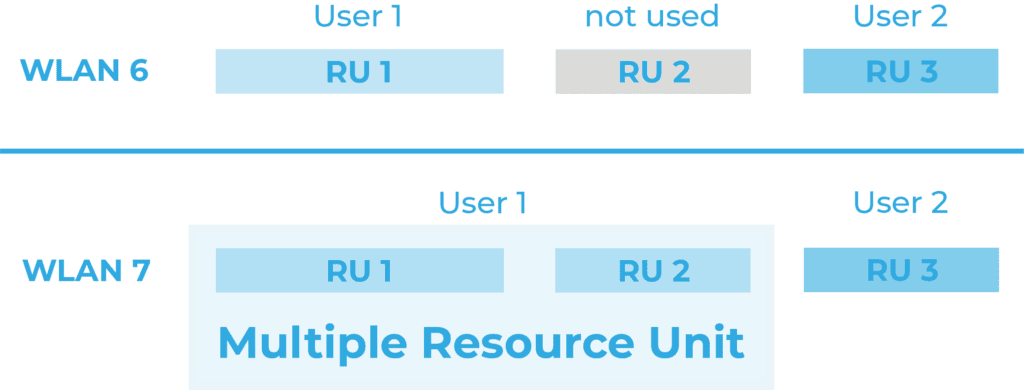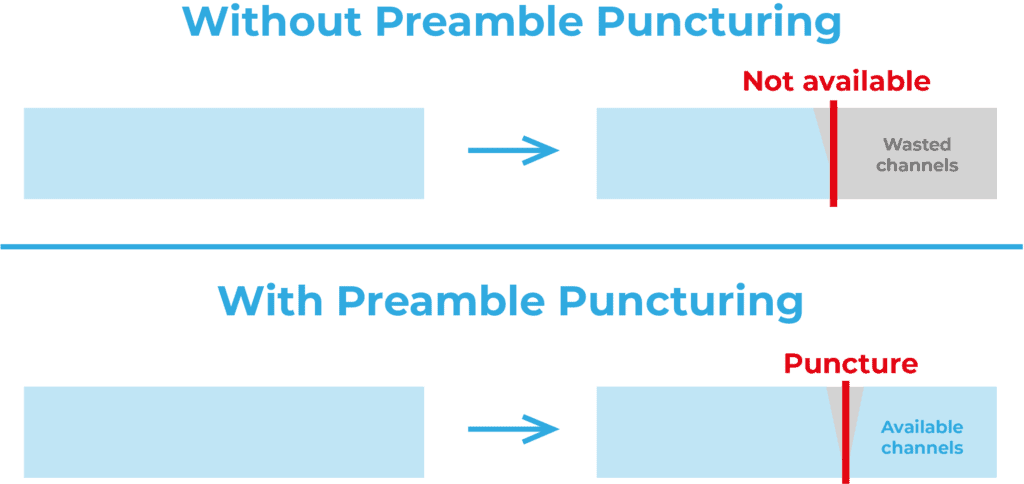
A new era has dawned in the world of wireless technology: WLAN 7, as an advance on previous standards.
WLAN standards have evolved rapidly in recent years to support the growing number of wirelessly connected devices. This evolution has been driven largely by the industry standards of the IEEE (Institute of Electrical and Electronics Engineers) and the certification tests of the Wi-Fi Alliance. For more information on how you can further expand your infrastructure, read our blog post “Build IT infrastructure and benefit from improved processes”.
But what exactly is behind this new standard? In this article, we take a comprehensive look at the future of WLAN and discover the groundbreaking innovations of WLAN 7 together.
The IEEE is continuously working on the further development of WLAN standards to ensure consistent compatibility between different devices. If you want to learn more about different network types, read our blog post “Network types decrypted: Your comprehensive guide to WAN, LAN, WLAN, VLAN, CAN, GAN, MAN, PAN and VPN”.
The latest WLAN standard, WLAN 7, aims to make significant progress compared to previous standards by focusing primarily on significantly increased data transmission speeds and optimized use of the frequency spectrum. Like WLAN 6E, an extension of WLAN 6, WLAN 7 uses three frequency ranges (2.4 GHz, 5 GHz, 6 GHz), which leads to a significant increase in network capacity.
While Wi-Fi 6 was primarily focused on the growing number of networked devices, the new standard was designed to deliver impressive performance for all applications - from 8K video to amazing VR experiences. Thanks to modern techniques such as 320 MHz bandwidth, 4096-QAM and multi-link operation, speeds are achieved that can be more than 4 times faster than Wi-Fi 6 and even 13 times faster than WLAN 5.
Although the first Wi-Fi 7 products are expected as early as 2024, the standard is currently still in the final development phase. Interested consumers should therefore be careful when making new purchases, as the first devices may not yet offer the full range of functions, although the standard is fully backwards compatible with older standards.
The latest innovations in WLAN 7 build on the progress of previous WLAN generations and set new standards. This promises not only increased transmission speed, but also noticeably improved responsiveness and reliability. The result is a WLAN generation that offers a revolutionary level of performance and stability for an immersive user experience and the requirements of future technologies.
Multi-Link Operation:

Multi-link operation (MLO) allows WLAN 7 devices to use multiple WLAN frequency bands simultaneously. This enables faster and more stable data transmission and seamless band switching for optimal performance and minimal delay.
Multiple Resource Unit:

With MRU (further development of OFDMA), individual users can use multiple resource units (RUs) more flexibly as required. This allows unused portions of the same high-speed channel to be used to create large channels even without the full channel size of 320 MHz. This improved bandwidth utilization enables more efficient data transmission and increases the capacity for downloading and uploading data by individual users.
Preamble Puncturing:

Früher führte eine Überlastung eines Kanals dazu, dass die verfügbare Bandbreite nicht optimal genutzt wurde. Somit mussten die Daten über den Hauptkanal gesendet werden. Durch die Anwendung von Puncturing wird diese Blockade gelöst, sodass mehr Kanäle effektiv genutzt werden können.
Business environments
Private environments
Educational institutions
Healthcare
Public space
Entertainment and media
Regulatory challenges
Hardware requirements
Compatibility problems
Cost expenditure
WLAN 6, auch als 802.11ax bekannt, bringt bedeutende Fortschritte für drahtlose Verbindungen gegenüber früheren WLAN-Generationen. Es bietet verbesserte Leistung, reduzierte Verzögerungen und eine energieeffiziente Konnektivität im Vergleich zu älteren Standards wie WLAN 5 (802.11ac). Die Einführung von WLAN 6E erweitert die verfügbaren Frequenzen, um Engpässe und Interferenzen in geräumigen Umgebungen zu reduzieren. WLAN 6E und die bevorstehende WLAN 7-Generation versprechen zusätzliche Verbesserungen wie schnellere Geschwindigkeiten und zuverlässigere Verbindungen.
| Aspects | WLAN 6 | WLAN 6E | WLAN 7 |
|---|---|---|---|
| Standard | 802.11ax | 802.11ax | 802.11be |
| Year | 2019 | 2021 | expected 2024 |
| Frequency | 2,4 GHz, 5 GHz | 2,4 GHz, 5 GHz + 6 GHz | 2,4 GHz, 5 GHz + 6 GHz |
| Max. data rate | 9,6 Gbit/s | 9,6 Gbit/s | 46 Gbit/s |
| Access technology | OFDMA | OFDMA | OFDMA |
| Modulation | 1024-QAM | 1024-QAM | 4096-QAM |
| Safety | WPA3 | WPA3 | WPA4 |
| Channel size | up to 160 MHz | up to 160 MHz | up to 320 MHz |
| MU-MIMO | 8×8 UL/DL MU-MIMO | 8×8 UL/DL MU-MIMO | 16×16 UL/DL MU-MIMO |
| Important innovations | OFDMA, TWT, MU-MIMO, RU, BSS Colouring, Beamforming | OFDMA, TWT, MU-MIMO, RU, BSS Colouring, Beamforming | MLO, Multi-RU, Preamble Puncturing |
The launch of WLAN 7 marks a significant milestone in the development of wireless technologies. With its focus on increased speed, efficiency and security, WLAN 7 promises to meet the demands of modern networks and lay the foundation for future innovation.
Through a variety of applications, from business environments to entertainment and media, WLAN 7 will play a central role in wireless connectivity and revolutionize the way we interact with each other and our devices.
To benefit from the latest Wi-Fi standard, you will need a new router that supports Wi-Fi 7. The availability of such routers is currently limited and pre-production models are expensive, but this is expected to improve as the year progresses. A Wi-Fi 7-capable router is the basis for taking advantage of this standard, but also requires Wi-Fi 7-capable devices. When purchasing new devices, you should therefore consider their Wi-Fi capabilities. In addition to the hardware, drivers and operating systems (software) also need to be adapted to the new WLAN to ensure that the router and devices work together smoothly. We also offer a large selection of routers and access points so that you can establish a stable network connection in your company. In our store you will find well-known brands such as Cisco, HPE Aruba and Juniper.